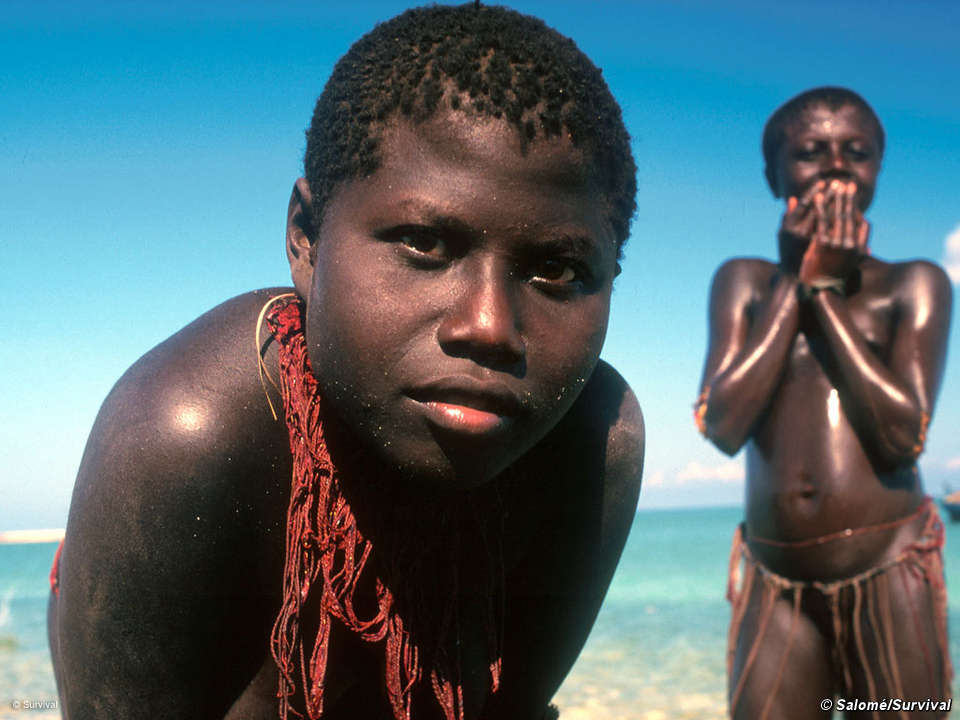Andaman And Nicobar Tribal Women Sexually Assaulted By Outsiders
The Jarawa

NEW DELHI: Earlier this year, news emerged that women of the rare Jarawa tribe in the Andaman and Nicobar islands are being sexually harassed and assaulted by poachers, settlers and tourists. In a rare interview published in Andaman Chronicle (www.andamanchronicle.net) a member of the Jarawa tribe came forward to protest against the sexual abuse faced by young women of the tribe at the hands of outsiders.
The Jarawa member, whose name was withheld for reasons of privacy, said the following in a statement that has been transcribed by the publication.
“The girls say… The outsider (in’en) boys press them... lots. They press them using hands and nails, when the girls get angry. They chase them under the influence of alcohol, the girls… They do (yoha) sex (pelta) with the girls. All the girls, (and he names around 10 girls). Sujoy and Chotu come to the girls and Bablu and Nitai and another one Kaushik… they drink alcohol in the house of girls. They also sleep in Jarawa’s house (Chadda). They chase the girls after smoking Ganja (Marijuana). smoking Ganja…”
The statement followed an incident where eight Jarawa girls were kidnapped. The girls were eventually rescued and brought back to the jungle where the Jarawas are located, and two groups of poachers were apprehended by the authorities. Recent incidents involving the Jarawa tribe in the Andaman and Nicobar islands have once again made the integration, assimilation or isolation debate relevant and thrown light on the shortcomings of official Indian “tribal” policy.
The Jarawa, who are believed to have traveled to the Andamans from Africa up to 60,000 years ago, are one of the four tribal groups in the Andaman and Nicobar Islands. The others are the Sentinese, the Ong and the Great Andamanese (themselves comprising of 10 tribes). The Ong and Great Andamanese have ended their isolation, now surviving largely on government handouts. The Sentinese continue to shun all contact, and the Jarawa have begun making contact with the “outside world” in the last decade.
Reports of sexual abuse of the Jarawa, the introduction of alcohol and drugs into the Jarawa forest by outsiders, and the prevalence of diseases being brought into the area by movement on the Trunk Road, have raised questions about the Jarawa’s future. To quote Lichu, one of the Great Andamanese whose numbers have dwindled from several thousand to under fifty, “I think what happened to us will happen to the Jarawa… Public interaction with the Jarawa should end.”
Lichu, and more so members of the Jarawa tribe, have reason to be concerned. In 2012, The Observer released video footage of Jarawa girls being coerced into dancing semi-naked in exchange for food. The video showed a policeman, whose official duty is to protect the Jarawa people, encouraging the girls to perform with the reminder, “I gave you food.” The Observer recorded incidents of tourists, who visit the Jarawa forest, throwing bananas and biscuits on the roadside as they would do to animals. Tourism to the forest has been described as “human safaris,” as signs warn you against initiating contact or taking photographs of the Jarawa people.
The footage had caused widespread outrage, with the Supreme Court of India banning these “human safaris” only to acquiesce to the island administration’s not entirely convincing assurances that they will protect the Jarawa as the safaris continue. The Jarawa members interview is testament of the failure of the island authorities in protecting the Jarawa people.
In deliberating on the future of the Jarawa people, and whether assimilation, integration or isolation, the latter being what Lichu recommended, is the preferred way forward - the Jarawa must be involved. One must recognize that the Jarawa people have their own agency, their own bodies of knowledge and understanding of processes. In the same sense, they may conceive their identity very different from outside elite projections. At the same time, the Jarawa are not a homogenous group - with their own structures, hierarchies and mechanisms. The Indian state has not been able to include the tribal populations in its formulation of a “tribal policy,” using a very ambiguous definition of the term tribal, positioning tribal groups as separate and isolated from “wider” society.
The Indian state may be at the risk of repeating colonial history, as four years ago, the last member of the Bo tribe - one of the Great Andamanese tribes - died, bringing to end the legacy of a people that were exploited by colonial rule, contracting diseases such as syphilis because of grave sexual assault.
The Jarawa, whose hunter-gatherer lifestyle is under threat as poachers and settlers encroach on their land and compete for increasingly scarce resource, is a text-book example of exploitation of the less powerful. In this case, instead of the colonial state being the biggest threat to the survival of the indigenous populations and their culture, it is the Indian state whose officials accept bribes to promote “human safaris” and exploitation, and whose policies threaten the very same people the aim to protect.



